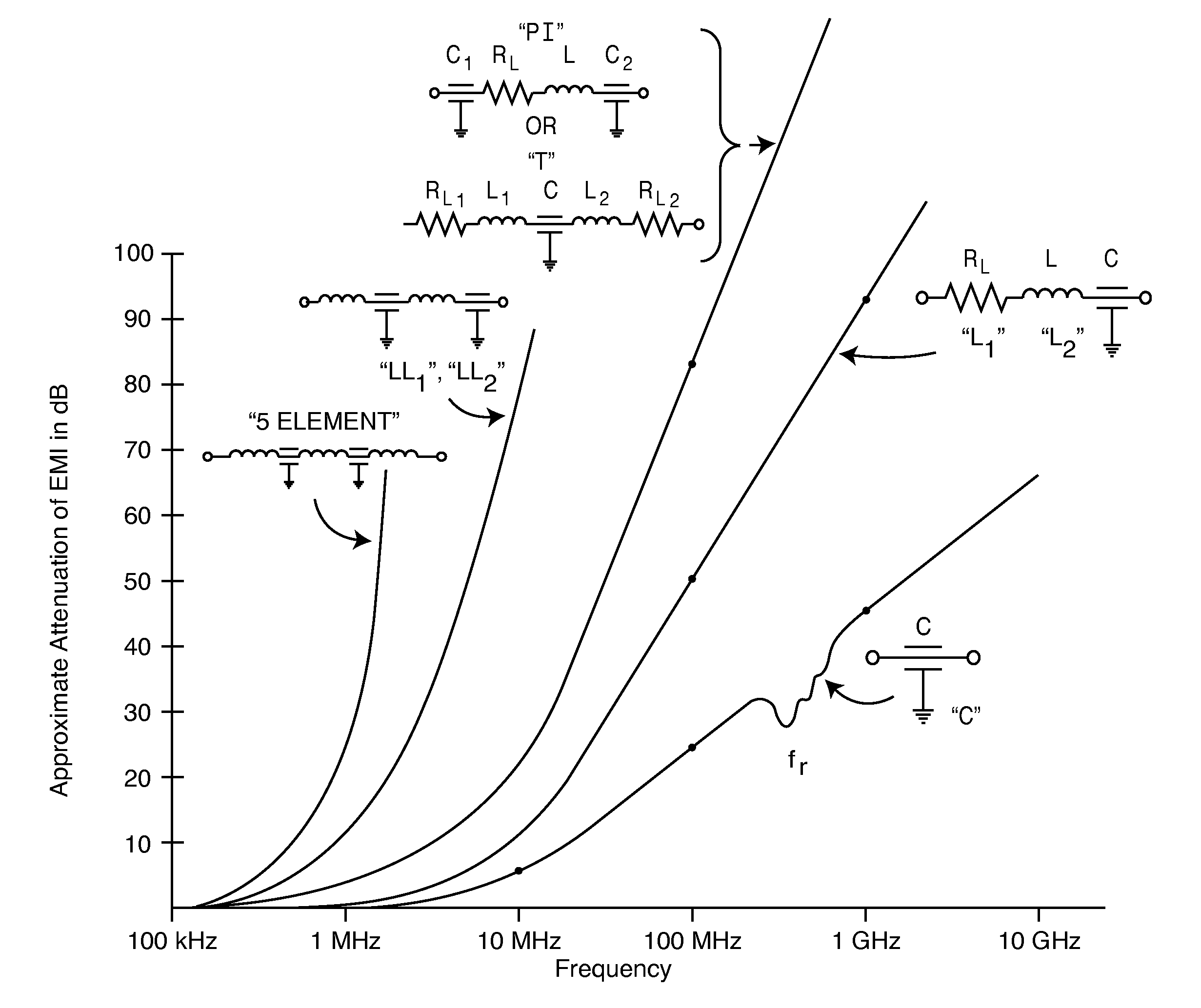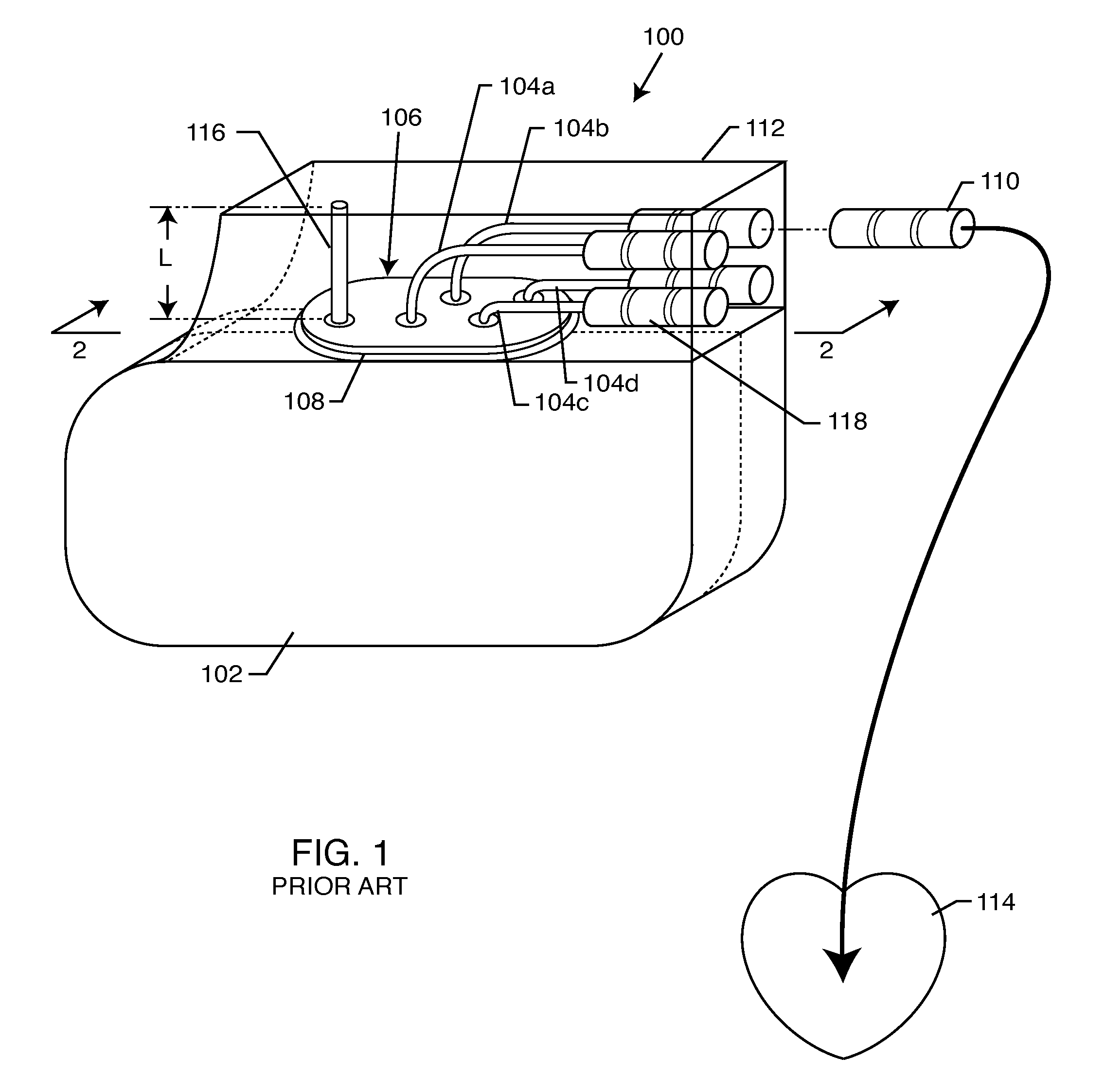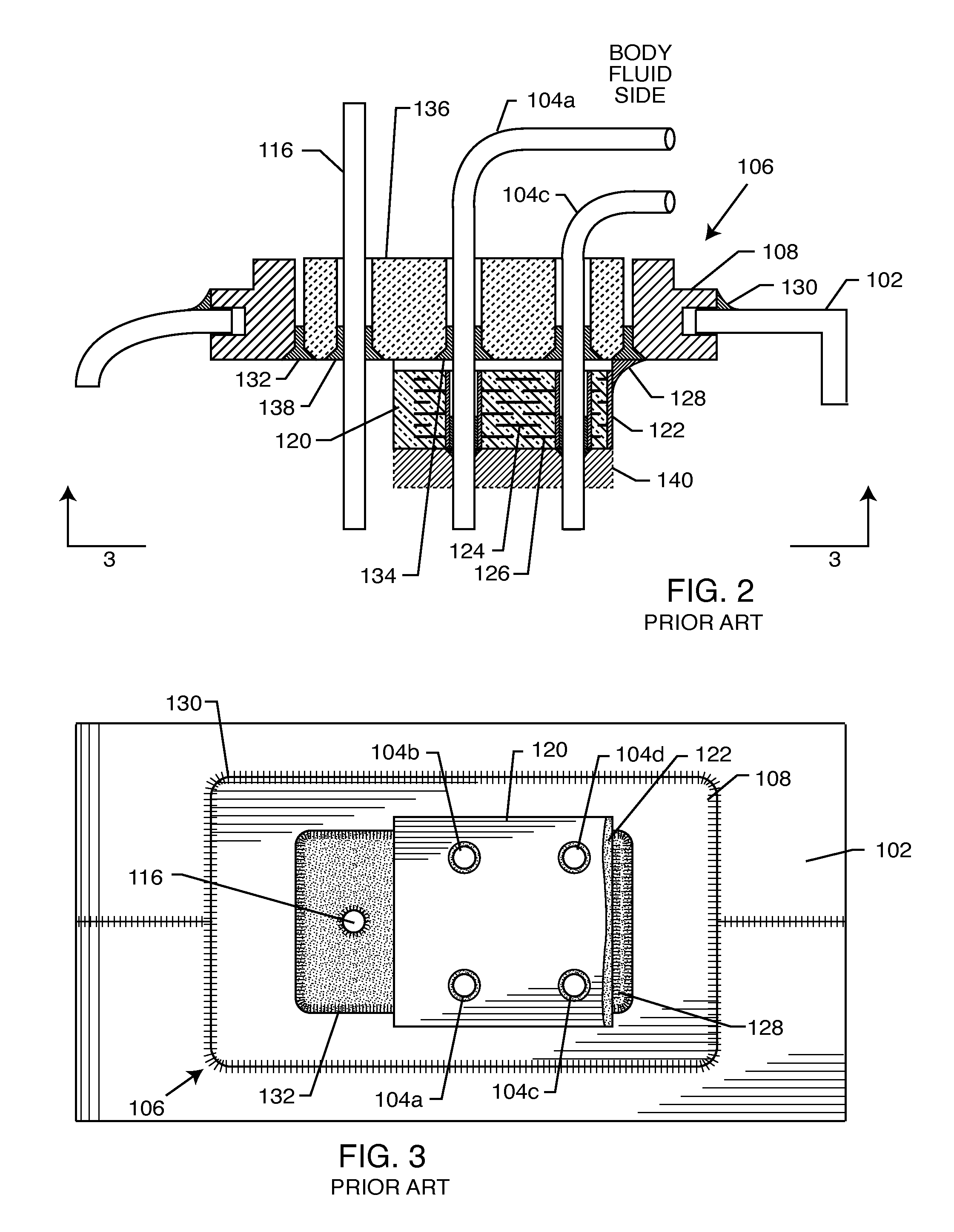Low loss band pass filter for RF distance telemetry pin antennas of active implantable medical devices
a technology of low loss band and filter, which is applied in the field of low loss band pass filter for rf distance telemetry pin antenna of active implantable medical devices, can solve the problems of low data transfer rate, high cost, and time-consuming to go back and interrogate the device, and recover complex stored waveforms with such a low data transfer ra
- Summary
- Abstract
- Description
- Claims
- Application Information
AI Technical Summary
Benefits of technology
Problems solved by technology
Method used
Image
Examples
Embodiment Construction
[0108]As shown in the accompanying drawings for purposes of illustration, the present invention relates to the design, fabrication, and attachment of a novel band pass filter to or adjacent to a hermetic feedthrough assembly. In one preferred form (FIGS. 10-13, 16-49 and 53-68), the band pass filter is connected between the RF telemetry pin or antenna and ground for filtering EMI separately from the RF telemetry signals. A typical band pass filter used in accordance with the present invention utilizes a capacitor and an inductor in a parallel circuit, which is in turn connected between the RF pin(s) and ground. In another preferred form (FIGS. 69-75), the band pass filter is coupled in series along the length of the RF telemetry pin for attenuating pulsed MRI frequency signals.
[0109]Several methods can be employed in the fabrication of the inductive and capacitive components, including discrete components, thin film (i.e., vapor deposition, sol gel), and thick film (i.e., screen pri...
PUM
 Login to View More
Login to View More Abstract
Description
Claims
Application Information
 Login to View More
Login to View More - R&D
- Intellectual Property
- Life Sciences
- Materials
- Tech Scout
- Unparalleled Data Quality
- Higher Quality Content
- 60% Fewer Hallucinations
Browse by: Latest US Patents, China's latest patents, Technical Efficacy Thesaurus, Application Domain, Technology Topic, Popular Technical Reports.
© 2025 PatSnap. All rights reserved.Legal|Privacy policy|Modern Slavery Act Transparency Statement|Sitemap|About US| Contact US: help@patsnap.com



